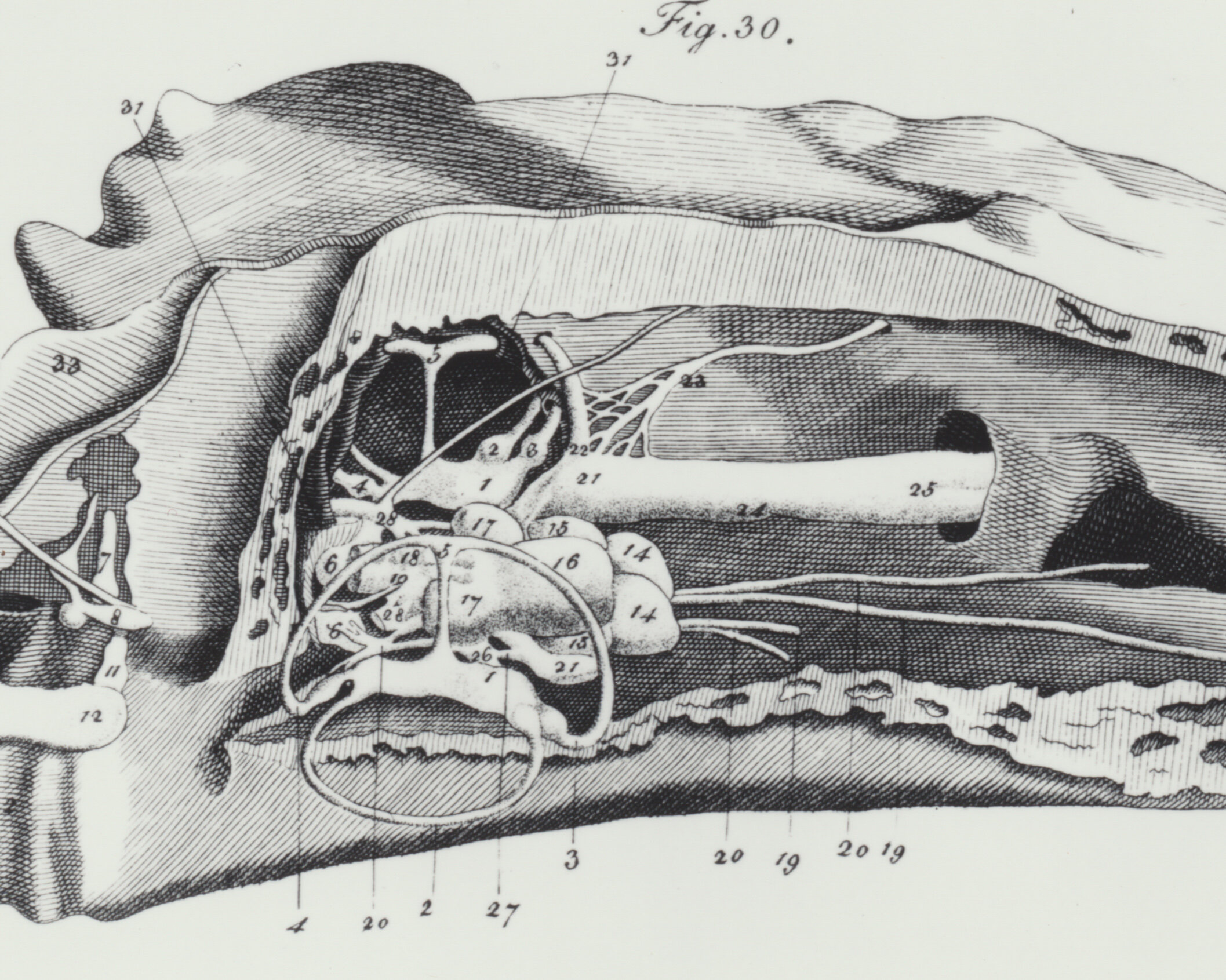
What Can Fishes Hear?
Hearing Capabilities
All species of fish have an inner ear and can, presumably, hear. However, just as there is wide variation in the structure of the anatomy of the auditory system, there also is substantial variation in the frequency range of sounds that fishes can hear, as well as in the lowest sounds that fish can detect at any particular frequency (see Figure to the right). Of the approximately 120 species of fish (of 34,000 or more species) that have had their hearing tested, the majority detect sounds from somewhat below 50 Hz to up to 500-1000 Hz. This includes species such as salmon, tuna, cod, and many other commercially important species. A smaller number of species, such as goldfish, catfish, some squirrelfish, and a diverse group of other species can detect sounds to 3,000-4,000 Hz. All of these species have some kind of ancillary structure in the auditory system that helps expand hearing sensitivity. Moreover, the species that hear a wider range of frequencies also hear sounds at lower levels. The only species with a substantially wider hearing range are members of the Clupeiform (herring, shads, anchovies) family Alosinae which can detect sounds into the ultrasonic range, as shown here.
Hearing thresholds measured for different fish species. Note the substantial differences in hearing bandwidth and lowest sound level detectable.
What is Hearing?
There is a very “cavalier” use of the word (and concept of) “hearing” in the literature on fish sound detection. The problem comes down to what is meant by the word. The issue is that recent studies on fish sound detection tend to use some physiological measure that only determines detection by the ear and perhaps processing of sound in the brainstem, thereby not reflecting what the fish actually hears and can respond to. We discuss this issue in Popper et al. (2019).
The critical issue is that for over 75 years, hearing in terrestrial vertebrates (including humans) has been thought of as signals (and signal levels) that are processed by the brain, perceived by the animal, and which may result in a behavioral reaction (of course the animal may choose not to respond). This is an accepted use of the term, and reading any papers since at least as early as 1950 supports the idea. Thus, it is not appropriate for investigators studying sound detection in fishes to redefine accepted terminology.
The issue is that physiological methods such as evoked potentials and AEP, while measuring sound reception at lower levels of the auditory system, does not reveal what fishes actually perceives. Thus, such measures are not measures of hearing and do not represent what any animal actually years.
The fact is that the only studies that actually measure hearing, as defined by investigators for decades, is done behaviorally Such studies involves some kind of behavioral response to the presence of a sound. Behavioral responses generally involve training a fish to respond to the presence of a sound. The precise method for this does not matter, but most often will involve either operant conditioning (avoidance or positive reward) or conditioned responses such as changes in respiratory rate (as done in my lab, as recently as work by Ben Colbert (in submission) or cardiac conditioning as done by my colleague Dick Fay. An exquisite example of using behavior to measure fish hearing was by Tavolga and Wodinsky (1963).
It also means that one cannot use physiological measures as indicators of hearing and it is not appropriate to make decisions on sound levels that may result in fish response or that might impact fishes (e.g., harm or cause some kind of reaction). Indeed, as recently demonstrated by Ben Colbert (in submission) in his doctoral work at the University of Maryland, behavioral hearing thresholds, particularly at lower frequencies, are well below thresholds measured with AEP.
The following sections discuss what is known about sound detection in fishes,.
Issues in Understanding Fish Hearing Capabilities
Auditory thresholds for goldfish done by different investigators. The substantial variation in sensitivity reflects differences in tank acoustics in various studies. From Popper et al. (2019).
How the experiment is done
Most studies of fish hearing is that they have been done in tanks of various types. The problem with this is that the sound field (acoustics) in tanks is very complex and most studies have not properly measured the sound field to which fish are exposed. Thus, it is not clear if the fish are responding to sound pressure and/or particle motion. We discuss these and other issues in detail in Popper et al. (2019).
Hearing thresholds for three species that detect particle motion. These studies, done by my colleagues Tony Hawkins and Olav Sand, were done in conditions where particle motion could be accurately be measured.
Sound pressure vs. particle motion
While most studies of fish hearing have measured sound pressure, and reported hearing sensitivity (thresholds) in terms of sound pressure, we now know that not all fishes detect sound pressure. All fishes do detect particle motion, ,and some have ancillary structures that also let them detect pressure. Measuring particle motion, especially in tanks, is very hard. Thus, reported thresholds for hearing may be incorrect for most species. We discuss this and related issues in Popper and Hawkins (2018).
Auditory thresholds in three species that have special adaptations that result in their having a wide hearing bandwdith because of detection of sound pressure as well as particle motion.
How to measure hearing sensitivity?
There are many ways to measure hearing. In earlier studies, such as those by Karl von Frisch and his students, William Tavolga and his colleagues, and Anthony Hawkins and his collaborators, hearing was measured using behavioral measures. In these studies, fishes were trained to do a “task” whenever they heard a sound. Such studies reflect not only what is detected by the ear, but the processing of sound in the brain - much as happens with human hearing.



